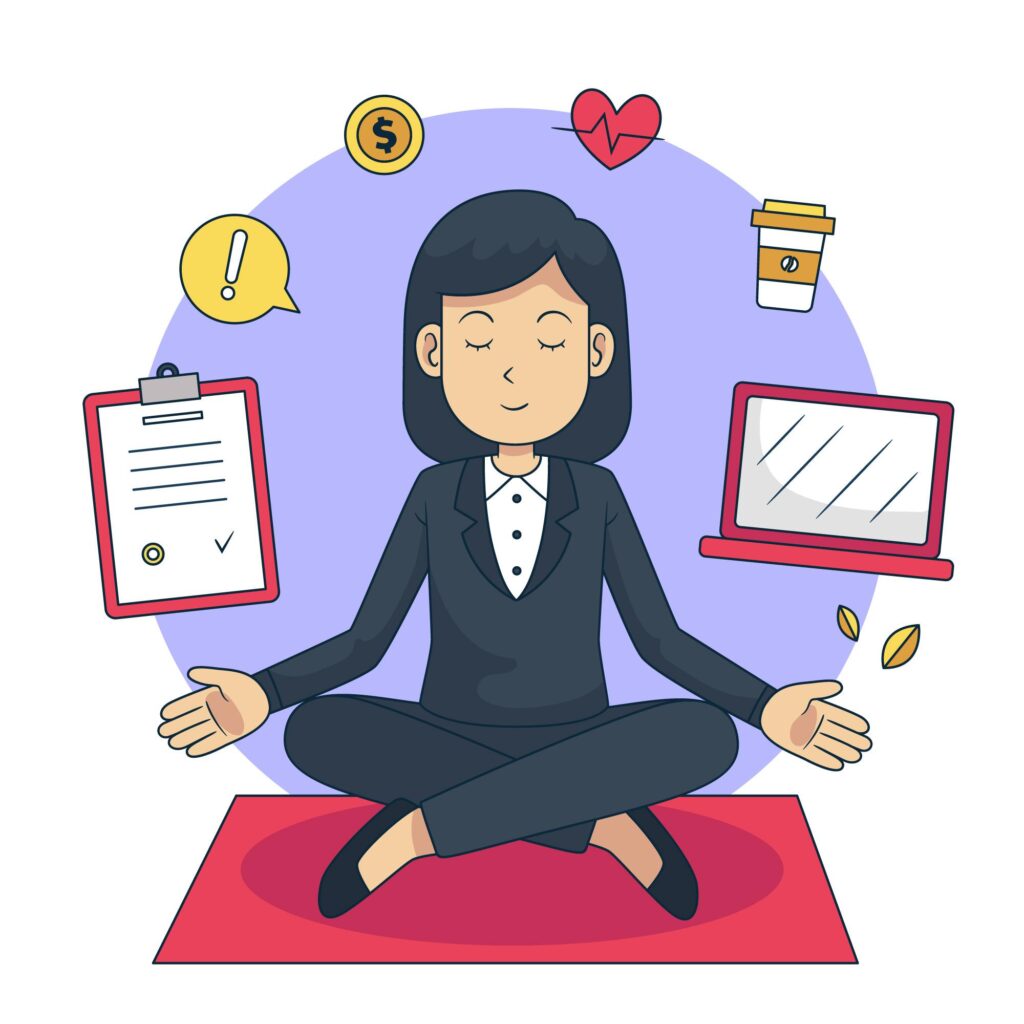Discover effective strategies to manage and reduce stress in your life. Empower yourself with practical techniques for a calmer, more peaceful you. How to manage stress? Stress, that persistent and unwelcome companion, has the ability to drain our energy, cloud our judgment, and hinder our well-being. But fear not, for in this article, we will delve into a treasure trove of strategies and techniques designed to empower you in your quest to conquer stress and regain your inner peace. As a passionate freelance trainer dedicated to personal and organizational growth, I am excited to guide you through these transformative life skills that will help you navigate life’s challenges with resilience and poise. Let’s embark on this journey together.

1: Understanding the Stress Landscape
- Recognizing the Sources of Stress: In this section, we explore the various factors that can trigger stress in our lives. These could include work-related pressures, personal relationships, financial concerns, and more. By identifying these stressors, individuals can start to address and manage them effectively.
- The Impact of Chronic Stress on Health and Well-being: This component delves into the consequences of prolonged stress on our physical and mental health. We discuss how chronic stress can lead to issues like anxiety, depression, and even physical health problems. This understanding emphasizes the urgency of adopting stress management techniques.

2: Building Your Stress Management Arsenal
- Harnessing the Power of Mindfulness Meditation: Here, we explain the concept of mindfulness and its role in stress reduction. Detailed instructions on how to practice mindfulness meditation are provided, along with its benefits for calming the mind and improving focus.
- The Art of Effective Time Management: A Stress-Reducing Approach: This component explores time management techniques that can help individuals prioritize tasks, reduce procrastination, and create a more balanced daily routine. Effective time management contributes to lowering stress by enhancing productivity.
- Cultivating Healthy Habits: Exercise and Nutrition for Stress Resilience: This part emphasizes the importance of physical well-being in stress management. It delves into the positive impact of regular exercise and a balanced diet on reducing stress hormones and promoting overall mental and physical health.

3: Mastering the Mind-Body Connection
- Unleashing the Calming Potential of Deep Breathing Exercises: Deep breathing exercises are explained here as a simple yet powerful tool for activating the body’s relaxation response. Step-by-step instructions on various deep breathing techniques are provided, helping readers incorporate these exercises into their daily routine.
- The Role of Sleep in Stress Restoration and Emotional Balance: This component focuses on the vital role of sleep in stress management. It discusses the importance of quality sleep for emotional resilience and provides tips for improving sleep hygiene.

4: Empowering Through Cognitive Strategies
- Reframing Negative Thoughts: A Pathway to Stress Transformation: This section introduces cognitive restructuring, a technique for changing negative thought patterns. We provide examples of common negative thoughts and guide readers on how to reframe them into more positive and realistic perspectives.
- The Power of Gratitude: Shifting Focus to Cultivate Positivity: Gratitude’s impact on stress reduction is explained here. Readers learn how practicing gratitude can shift their focus from stressors to positive aspects of their lives. Practical exercises for cultivating gratitude are included.

5: Nurturing Relationships and Social Connections
- The Vital Role of Social Support in Stress Management: This component highlights the significance of social connections in managing stress. It discusses the benefits of seeking support from friends, family, and communities during challenging times.
- Effective Communication: Setting Boundaries for a Stress-Free Life: Effective communication and boundary-setting are explored here. The article explains how clear communication and setting healthy boundaries can prevent unnecessary stress and conflicts in relationships.
Each of these sections is designed to provide you with practical tools, techniques, and insights for managing stress effectively. By addressing the different aspects of stress and offering actionable strategies, the article empowers you to take charge of their well-being and lead a more balanced and peaceful life.

Harnessing the Wisdom Within:
Remember, stress is not an adversary to overpower, but an experience to learn from. As the saying goes, “In the middle of difficulty lies opportunity.” Embrace the challenges as stepping stones toward growth.
Unlocking Your True Potential:
Amid life’s chaos, the ability to manage stress empowers you to navigate the uncertain waters with grace. Embrace these strategies as allies in your journey to a more tranquil existence.
References:
- To know about more on ‘Stess’ in question and answer type: Visit : Stress management – What is stress
Conclusion:
In the grand tapestry of life, stress is but a single thread. By incorporating these valuable strategies into your daily routine, you’re weaving a stronger fabric of resilience, positivity, and self-care. So, as you step forward armed with newfound knowledge, remember that the power to manage stress resides within you. Thank you for joining me on this expedition of self-discovery. If you hunger for more insights, explore our enriching articles that light the way toward holistic growth and personal empowerment.
Thank you for exploring this insightful article. If you’re hungry for more knowledge, don’t miss out on our other engaging articles waiting for you. Dive into our treasure trove of wisdom and discover new perspectives on related topics. Click ‘Our Blog’ and ‘How to Guide’ to embark on your next adventure. Happy reading!


1 thought on “How to manage Stress and Reclaim Your Inner Peace”
Comments are closed.